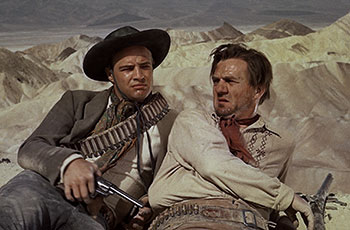
NOTES ON FILM & RESTORATION
01/27/2021What exactly do we mean when we say “film culture?” In the broadest sense, it means the community of people across the globe who share a love for the art of cinema. That includes filmmakers, programmers, preservationists, critics, academics, self-described cinephiles and plain old movie fans. Some of us are all of the above put together. For many years, beginning with the introduction of the videocassette, we shared hard-to-find titles through the mail (illegally!), made from the best available sources and possibly upgraded as we went along. This was long before everyone’s eyes were primed for digital sharpness. We were all used to 16mm prints “chained” for television or screened in repertory houses, some of them several thousand light years away from an original or even a dupe negative. Thousands of titles were acquired by companies like Sinister Cinema, which specialized in horror and science fiction and had a good level of quality control. There were also many other fly-by-night companies whose packaging was created with Xerox machines and whose cassettes turned up in abundance at Kim’s Video here in New York. I remember the excitement I experienced when I first saw those titles on the shelves (sorted by filmmaker—the Godard section was labeled “God”). Rossellini’s historical films! Early Mizoguchi!! Straub/Huillet!!! There was the excitement, and then there was the reality of the actual transfer, which was often comically deficient. You would have to squint, very hard, to make out the movement of actors in the frame or to decide whether the dark blur on the left was a tree or a skyscraper. You would find a way to allow for the slurring and warping of imperfect transfers made from imperfect transfers made from ancient broadcasts that had been recorded way back when by someone with a ¾-inch Helioscan deck. As unwatchable as the image often was, the sound was usually worse, a succession of distorted wow-ing utterances and music cues heard through a thickly layered wall of static. At a certain inevitable point, the tracking would fall apart and that would be the end of the “screening.” The homemade tapes that we shared were often just as imperfect. However, it was the sharing that counted.
Edward Yang’s epic film A Brighter Summer Day was one of the titles that floated in the cinephilic ether. Prints were rare. The video copies that circulated were far more acceptable than the extreme cases that I’ve described above, but the version that was most readily available was shortened. Like many of Edward’s films, it remained difficult to see in anything approaching proper conditions for many years, before and after his death.
When I came aboard at the World Cinema Project, the first round of restoration on the film had just been completed by L’Immagine Ritrovata and the Cineteca di Bologna (the WCP later restored Taipei Story). It’s always a great experience to see a film that has been routinely shown under imperfect conditions, carefully restored to something approaching its original state. In this case, it was in Cannes, albeit in the very strangely configured Salle Buñuel (which is wider than it is deep, which means that half the audience has to watch the film from a distorted perspective), in the presence of Edward’s widow Kaili Peng and his son Sean. To see A Brighter Summer Day unfolding on a big screen was startling. It was also, in some way, an affirmation of all those years of sharing imperfect VHS tapes (illegally!), keeping the flame of love for cinema stoked and burning.
- Kent Jones
Follow us on Instagram, and Twitter!
A BRIGHTER SUMMER DAY (1991, d. Edward Yang)
Restored in 2009 by Cineteca di Bologna/L’Immagine Ritrovata laboratory, in association with The Film Foundation’s World Cinema Project, the Central Motion Picture Corporation, and the Edward Yang Estate. Scan performed at Digimax laboratories in Taipei. Restoration funded by Armani, Cartier, Qatar Airways and Qatar Museum Authority.
TAIPEI STORY (1985, d. Edward Yang)
Restored by The Film Foundation’s World Cinema Project at Cineteca di Bologna/L’immagine Ritrovata laboratory in association with the Cinémathèque Royale de Belgique and Hou Hsiao-hsien.
The Film Foundation
